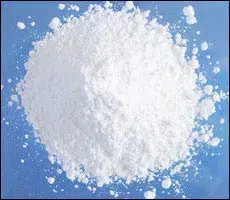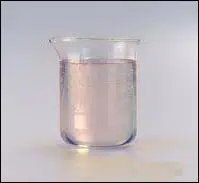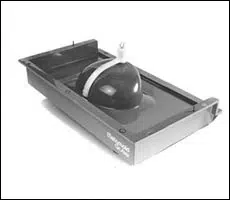Frequently Asked Questions (FAQs)

Onyx products remain clean with minimal efforts. A simple weekly cleaning is often more than enough to keep a shower or vanity top looking new. Most household cleaners work well with Onyx. Just be sure that the cleaner is non-abrasive (no grit in the cleaner). A surface protectant (similar to Rain-X on a windshield) will keep water spots and deposits from forming and can make cleaning an Onyx shower even easier.
Frequently used cleaners include White Vinegar, Eliminate Shower Tub & Tile Cleaner, CLR Kitchen & Bath, Kaboom, Scrubbing bubbles, Clorox (cleaners or wipes), Lysol, Clean Shower-Daily Shower Cleaner. Once again, please avoid any abrasive household cleaners like the traditional Soft Scrub, Comet, The Magic Eraser, or similar cleaners with a “gritty texture”.
The simplest option is white vinegar – a natural cleaner that works well. White vinegar often works the best when faced with hard water/soap film deposits. Use straight white vinegar with a sponge or a nylon/plastic bristle scrub brush. For extreme situations with stubborn mineral or soap buildup, try soaking a paper towel or two in straight white vinegar and then laying it on the affected area. After about 30 minutes, use your scrub brush to break down and remove any excess build-up. It may take a couple of these treatments when hard water buildup is thick.
Once again, any non abrasive cleaner will work on our Onyx products and on the 100% silicone that we send. Use a surface protectant to make cleaning even easier. We appreciate all feedback and we are happy to answer any other questions you may have for us!

63% of our products is a hydrate crystal–Al2O3+3H2O. Alumina is also the main ingredient in Corian and all “solid surface” products.The main ingredient in our product is (alumina trihydrate). Our other 37% is a special polyester resin we developed over the last 30 plus years.
Our resin does not contain any urea formaldehyde.
All manufacturers try to get properties which make products work best for their applications. Our application is the bathroom. We believe our resin serves this purpose well. Corian uses acrylic resin, others use various blends of polyesters and acrylics.
Alumina Trihydrate
(Al2O3+3H2O)

The main ingredient, 63% in our product is Alumina Trihydrate.
Alumina trihydrate is a by product of the natural mineral Bauxite. It is in roofing materials and the plastics inside automobiles to slow flame spread and as a smoke retardant. It is in the plastic coating on the wiring in your home (in a much smaller percentage). Bauxite is the primary source of aluminium metal, and about 85% of bauxite mined is processed via the Bayer Process to make alumina trihydrate.

Polyester Resin

The other 37% is a special polyester resin.
We have developed and improved a special resin formula over the last 25 plus years to get flexible and durability properties. Our formula of resin gives our product that deep, translucent, clear appearance found in Natural Onyx. Our resin does not contain any urea formaldehyde.
Casting the product

We use cultured marble type molds to cast our products. The solid surface industry casts sheet goods and fabricates their products. Our product does have a gelcoat on the surface (about 15 mils) similar to cultured marble. Our Gelcoat is ISO-NPG polymer. ISO-NPG gelcoat is a tight molecule that is very resistant to water penetration.

In many cases Onyx material, i.e. shower panels, lavatories, trim, backsplashes etc., will require trimming as part of the installation process. All Onyx material can easily be cut notched or trimmed with standard woodworking tools, to achieve a custom fit. Woodcutting tools such as jigsaws and circular saws with a fine to medium tooth finish blade work best for cutting. A belt sander works great for minor modifications. Here is a link to a skill saw and a belt sander cutting / trimming a wall panel.

We have many dealers in most areas of the United States. Some have displays and some do not. To get a quote, please contact an Onyx dealer. Here is a map of Onyx dealers near you. Please contact us or call us at 1-800-669-9867 for information or any questions you may have.
In 1985 we decided that we would concentrate on making the products and let someone else sell and install. We still believe it is best to focus on the manufacturing and delivery of the products, and referring local dealers as the best means to see the products and get pricing. We aren’t set up to sell direct. No salesmen or rep firm and a zero advertising budget. No sign on our building and we don’t even have signs on our delivery trucks! This lets us concentrate on trying to cast and finish better products more efficiently. In most areas, we can refer homeowners to someone who sells, or who does both sales and installation–depending on their needs. Thanks.Bob.
The best way to remove excessive silicone is friction. You could use your thumb, credit card, or even a flattened Popsicle stick. If you prefer, you can purchase a mini plastic scraper, (available at hardware stores) There is also a product called Goo Gone that will help remove the adhesives qualities of the silicone. You will need to apply it and then use your thumb, credit card, flattened Popsicle stick or mini scraper to work the edge to get underneath. For a more industrial strength product, you could try a product called DSR-5.